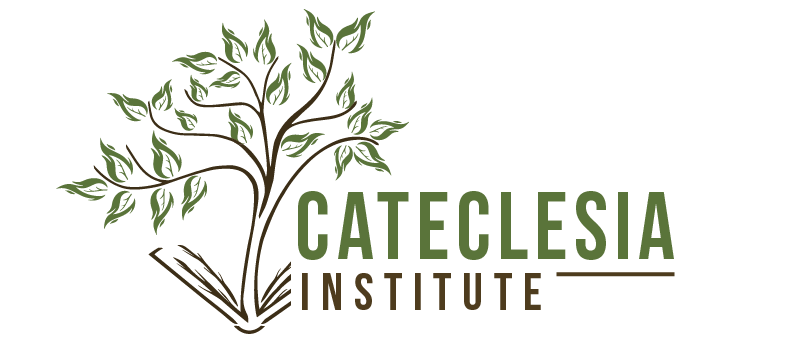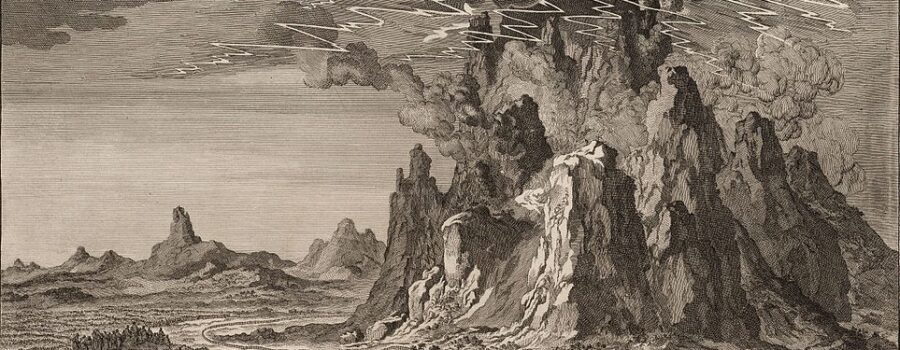Trevor Laurence
Throughout the Bible, God is all the time taking his seat on a mountain and distributing blessing after accomplishing his (re-)creational purposes through the waters on behalf of his people.
At creation, God forms the formless and fills the void, bringing dry land up from the watery depths and fashioning a cosmic house where he will dwell with human image-bearers. On the seventh day, he rests—that is, he takes his royal seat (see Ps 132)—enthroned in the heavens atop his cosmic mountain, atop Eden’s temple mount. And seated in his sanctuary, he blesses the seventh day and gives it as a blessing to his creation.
God brings the ark through the flood of judgment upon the wicked—a new creation delivered safely through the waters, complete with a new Adam to serve as head of a new humanity. The three-tiered ark comes to rest on a mountain (Ararat) quite like a three-tiered temple where God will take his rest on a mountain (Zion), and the Lord pours out a covenant promise (Gen 8:21) and a reiteration of the Adamic blessing to Noah (Gen 9:1).1
The exodus, too, is a new creation event. God brings Israel through the watery depths, vanquishing the pursuing forces of Egypt in the process, and leads them to Sinai where his glory descends upon the mountaintop. Sinai is a sanctuary, and from his summit dwelling, Yahweh blesses Israel with his law and with his presence. He will journey with them in the tabernacle, which is itself a mobile mountain, a tented model of Sinai where the glory of God resides with his people.
From Sinai, Yahweh marches through the Jordan into Canaan, defeats the idolatrous nations, and ascends yet another mountain to take his throne (see Ps 68). And from his royal seat upon Zion, the Lord blesses Israel with all the gifts that flow out from the glory-presence of God. The re-creative work that began with the crossing of the Red Sea is completed with the crossing of the Jordan as Yahweh establishes his sanctuary atop his mountain in an Eden-esque land and plants his people like a garden in his holy presence (Exod 15:17).
This pattern shapes prophetic expectation as well. To a community exiled from the Lord and his land, the prophets announce that God will lead Israel on a new exodus (e.g., Isa 43:16–21). Yahweh’s covenant people will emerge as a new creation on the third day (Hos 6:2) from the tumultuous sea of the enemy nations (Ps 107:23–32) just as the dry land rose from the waters on the third day of Genesis 1. The Lord will drive out their enemies (Isa 60:12), and he will take his royal residence on his temple mount to bless his people forever (Mic 4; Isa 65–66)—to bless them, indeed, with his Spirit (e.g., Ezek 39:25–40:2).
In Matthew’s Gospel, Jesus journeys through the Jordan in his baptism (Matt 3), makes war on the devil and his kingdom (Matt 4), then goes up on a mountain where, curiously, Matthew tells us that he sits down (Matt 5:1). Once again, exodus and triumph are punctuated with session on the mountaintop, and from his pinnacle seat, Jesus speaks blessings to his followers. While Jesus without a doubt fills up the footsteps of both Moses and Joshua, this Lord simultaneously repeats the pattern of Yahweh. The events leading up to and including Jesus’ giving of his Sermon on the Mount recall all the movements of Sinai and Zion—of God’s victorious enthronements and giving of gifts—because he is the God who is re-creating Israel in an exodus out of exile.
Jesus’ earthly ministry ends just as it began, with a journey through water and up a mountain. The Lord rises up on the third day through the judgment waters of death in a resurrectional exodus that disarms the Pharaonic principalities and powers, and Christ’s upward trek to the heavenly Zion and outpouring of the Spirit from the cosmic holy of holies brings to a Pentecostal climax the Bible’s triumphal mountain journey motif.
In baptism, the Christian participates in the mountainward movement of God. Following in the path of Jesus, sinners traverse from death to life through water and, brought to Yahweh’s mountain dwelling (Heb 12:22), are seated with and in Christ Jesus in the heavenly places (Eph 2:6), servant-sharers in the royal throne of the Zion above. And in every washed and restored image-bearer, Yahweh summits another mountain. Disciples pass through the baptismal flood—a new creation (2 Cor 5:17) rising from the waters—and the glory-Spirit who dwelt at Eden and Sinai and in the tabernacle and upon Zion makes his sanctuary in women and men made holy. Every saint is a water-born temple mount from whom living streams flow for the blessing of the nations (John 7:38; cf. Ezek 47:1–12). Every saint is a holy high place for the reigning presence of the victorious God who has triumphed over sin and death.
But there is one final mountain to climb. When Christ returns to conquer the serpent and his seed and ushers his people on a final exodus into the consummate new creation, he will be enthroned upon his temple mountain (Rev 21:10), and he will bless his kingdom of priests with the light of his countenance and the river that flows from his presence forevermore (Rev 22:1–5).
They shall not hurt or destroy
in all my holy mountain;
for the earth shall be full of the knowledge of the LORD
as the waters cover the sea. (Isa 11:9)
Trevor Laurence is the Executive Director of the Cateclesia Institute and the author of Cursing with God: The Imprecatory Psalms and the Ethics of Christian Prayer (Baylor University Press, 2022).
Image: Illustration from Alle de werken van Flavius Josephus by Jan and Kaspar Luiken (1723)
- See esp. L. Michael Morales, “The Tabernacle Pre-Figured: Cosmic Mountain Ideology in Genesis and Exodus” (PhD diss., University of Bristol/Trinity College, 2011), 176–8.[↩]

